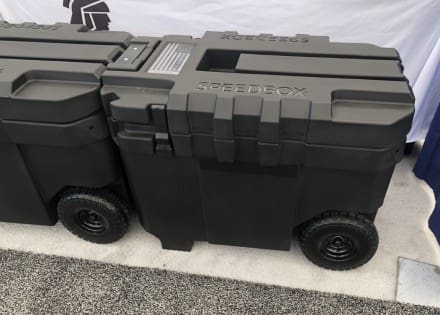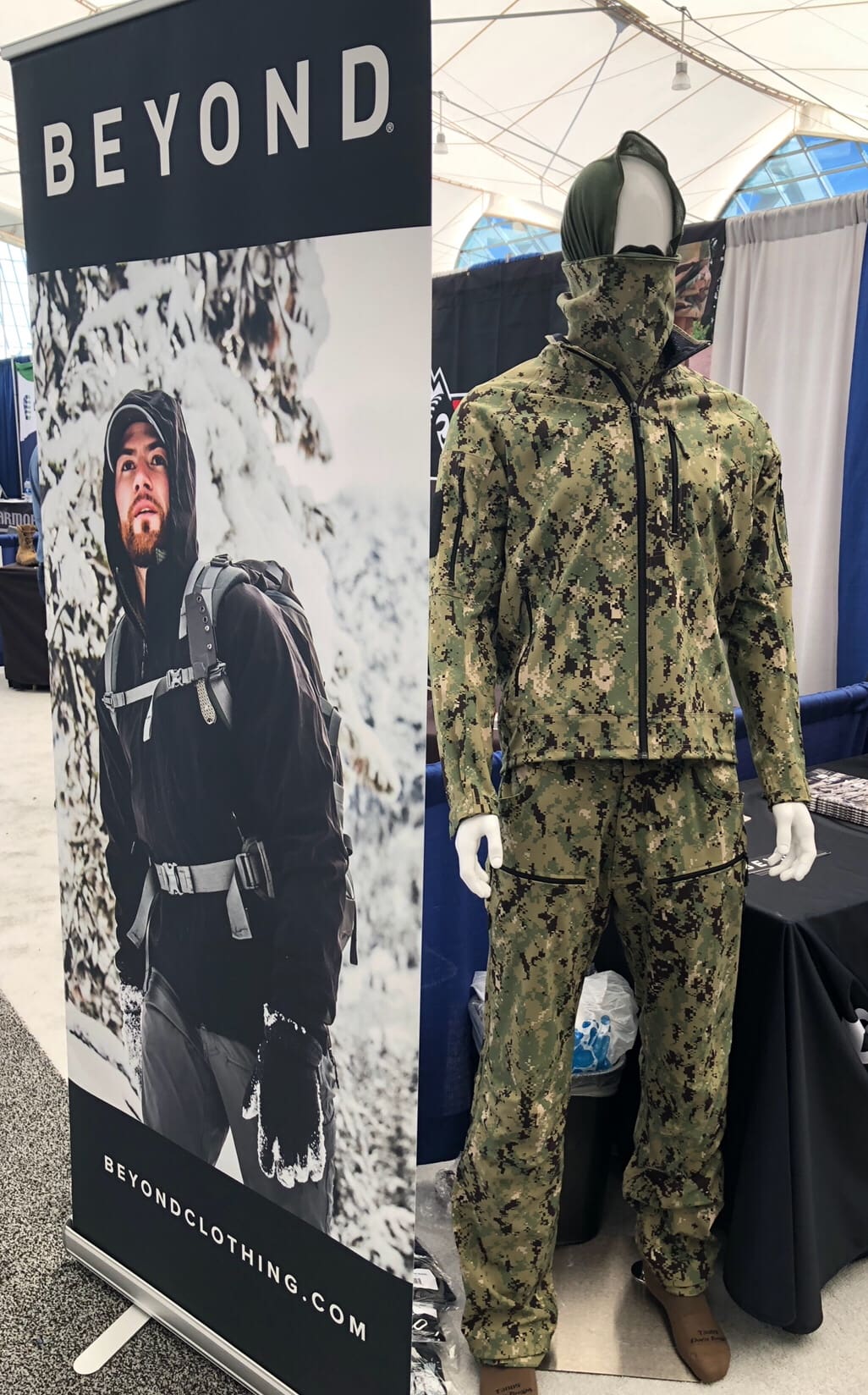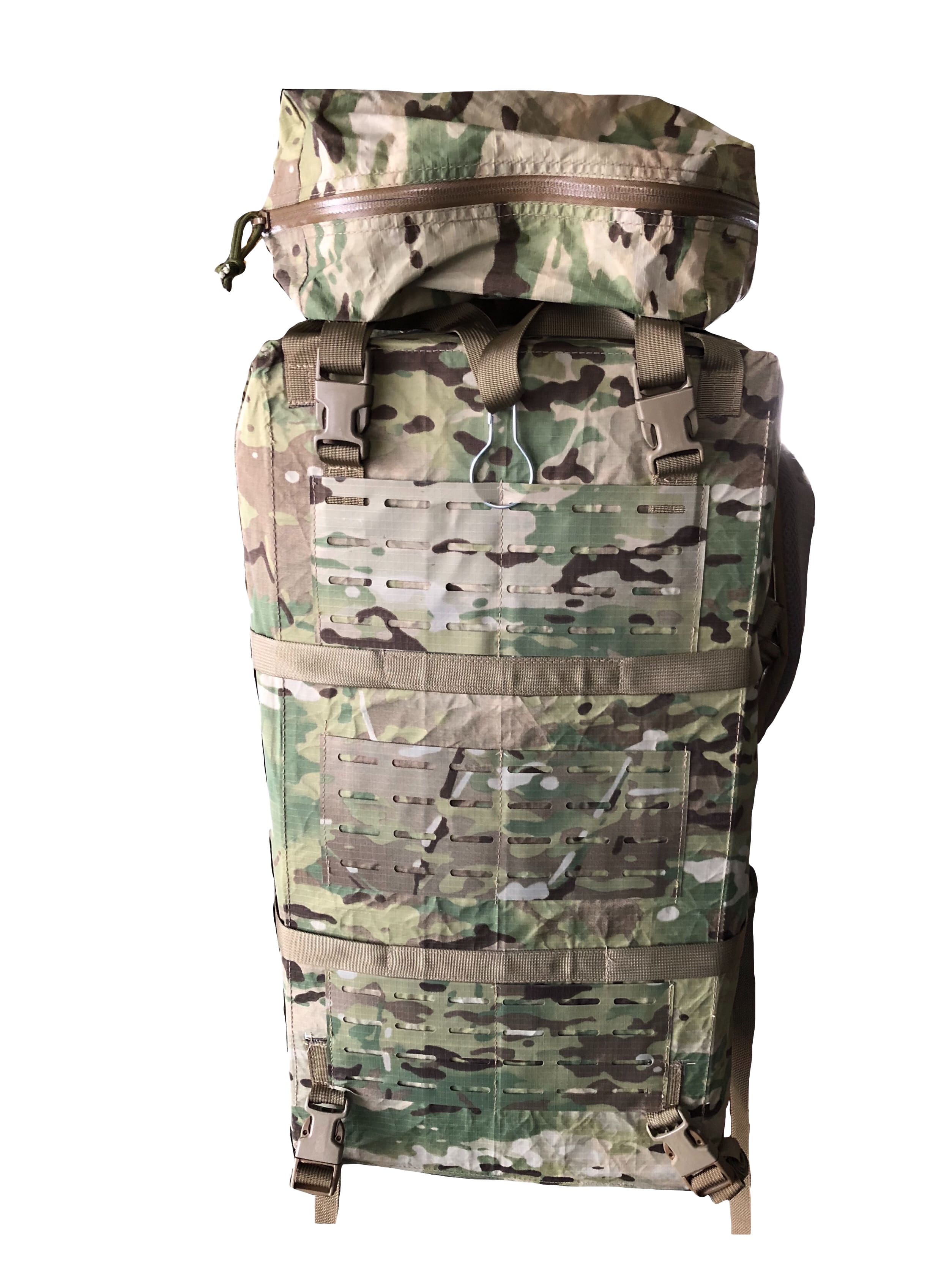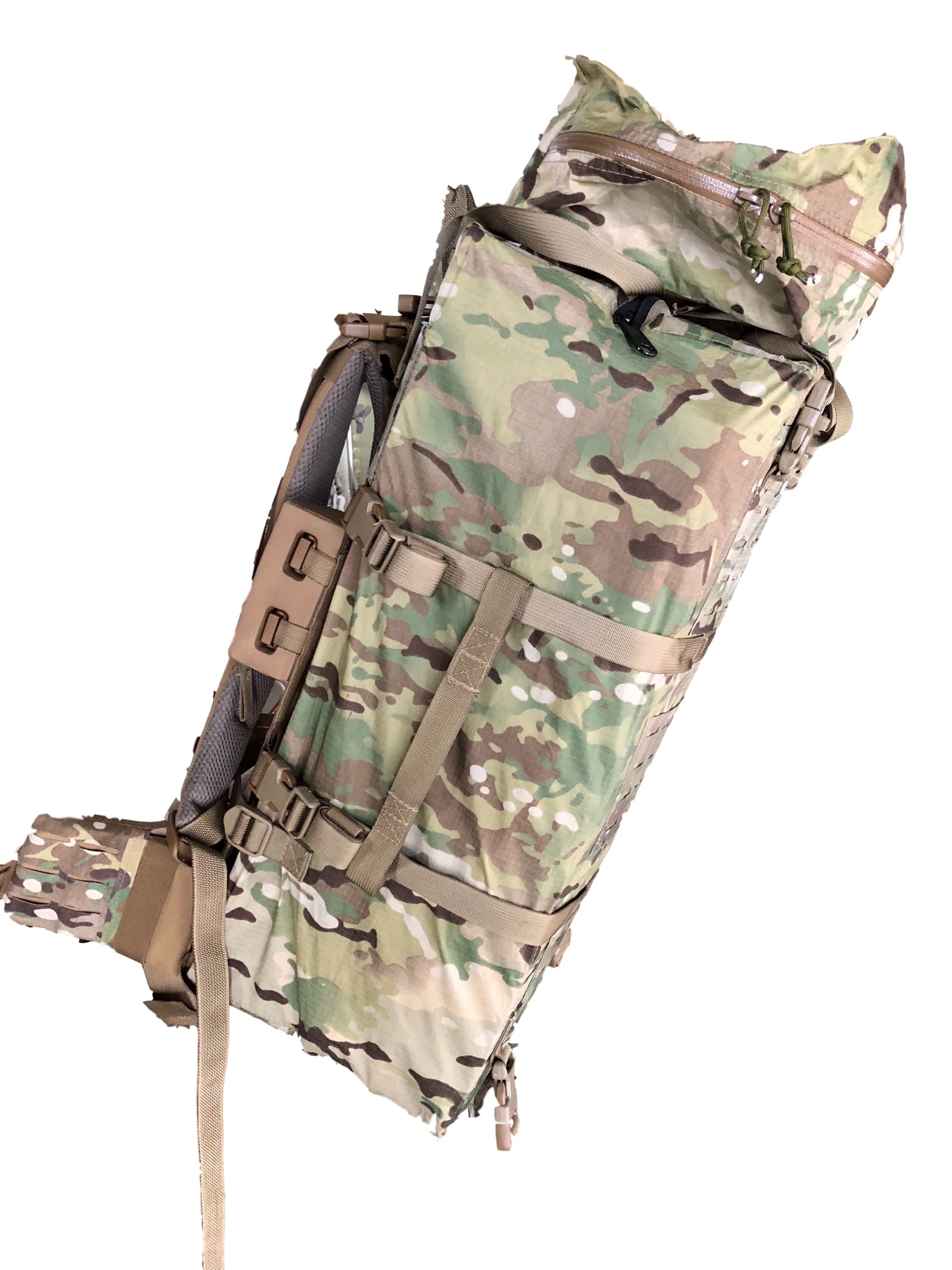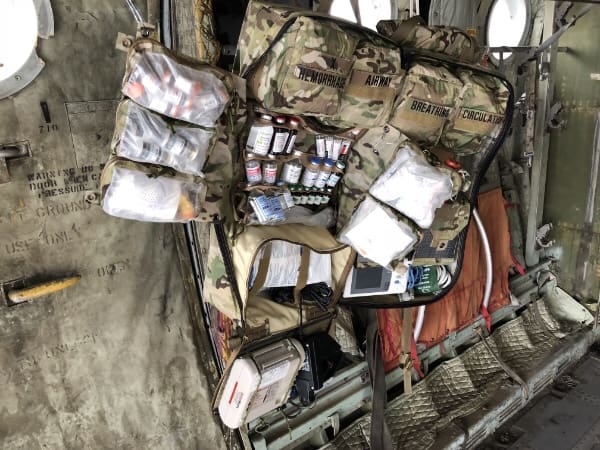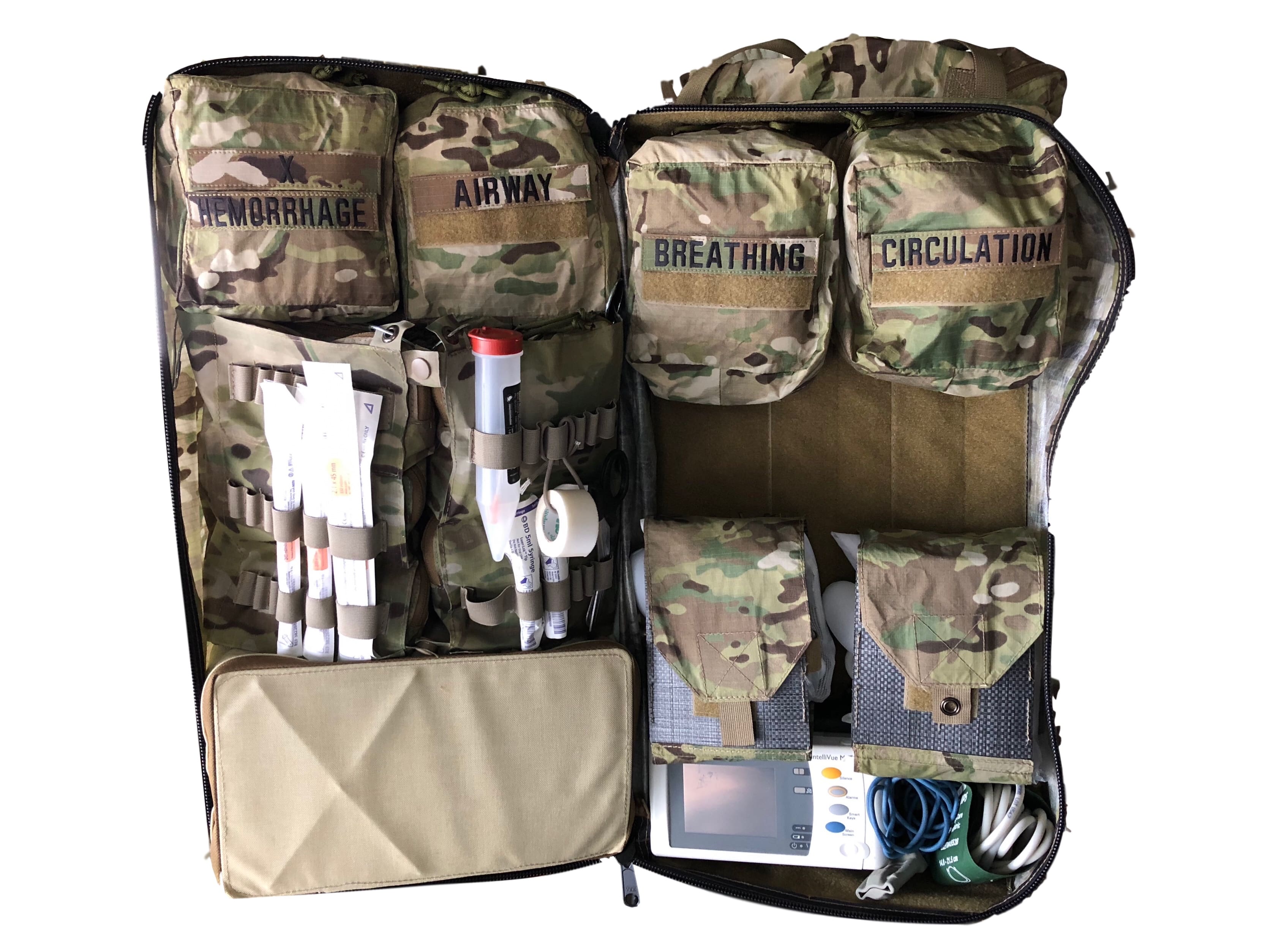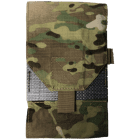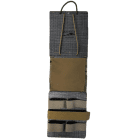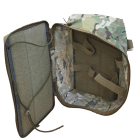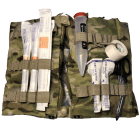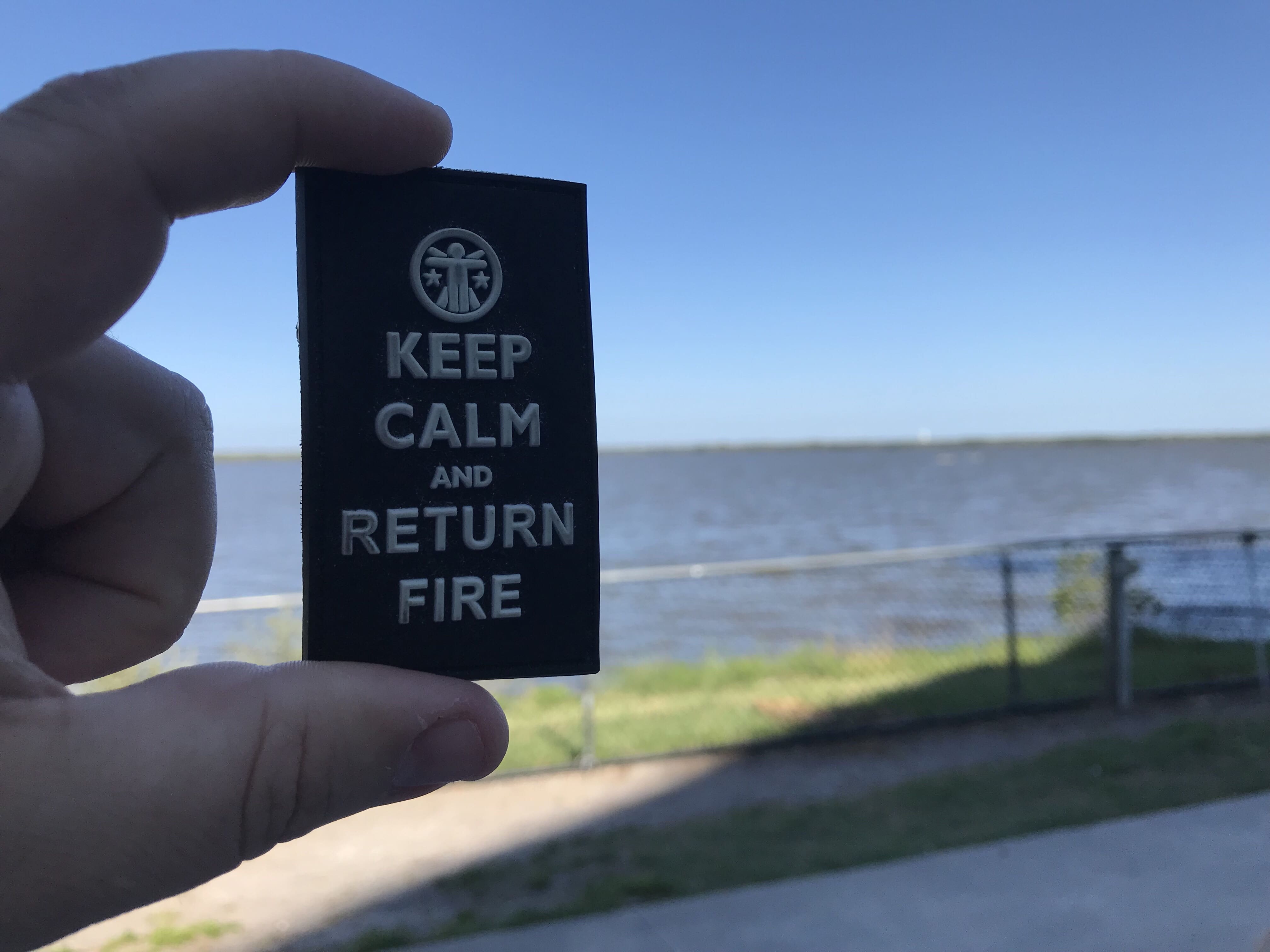When the 82nd called in a request, Natick delivered. The response: the latest iteration of the Army’s airborne rucksack, the Modular Lightweight Load-Carrying Equipment (MOLLE) 4000. Formatted to address the needs of the 82nd Airborne Division, the mid-sized rucksack has been designed, tested, and is now slated for limited distribution. Fabricated with both sewn-on and removable pouches, the MOLLE 4000 should be versatile enough for Army-wide utilization of the system.
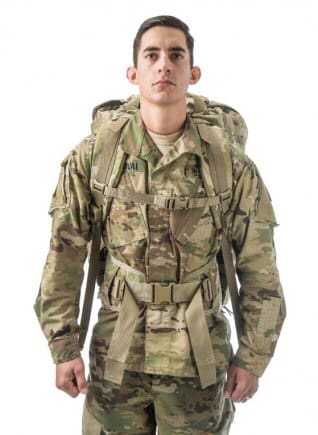
Operations Sergeant, Human Resources Development Division (HRDD), Staff Sgt. Anthony Sandoval, demonstrates the redesigned Modular Lightweight Load-Carrying Equipment (MOLLE) 4000. Developed by Load Carriage Systems, Product Manager, Solider Clothing and Individual Equipment at Natick, Soldier Systems Center, the mid-size ruck has a larger top flap and more spacious leg storage pockets than previous versions of MOLLE. Additionally, the MOLLE 4000 has an internal radio/equipment pocket and a lengthened back pad for increased comfort. (Photo Credit: Mr. David Kamm (RDECOM))
“The beauty is, we designed a rucksack specifically for the airborne community, however, non-airborne units can use this rucksack just as effectively by just not being issued the airborne harness components, ” said Rich Landry, Individual Equipment Designer with Load Carriage Systems, Product Manager, Solider Clothing and Individual Equipment.
A former Pathfinder with the 82nd, Landry understands the needs of the Airborne community. Through communication with the 82nd, and other Army units, Landry obtained the feedback necessary to improve the rucksack, a critical tool for deployed Soldiers. This final design borrows elements from the old ALICE pack, and earlier versions of MOLLE. After listening to critiques of previous equipment, Landry determined adjusting weight distribution was key.
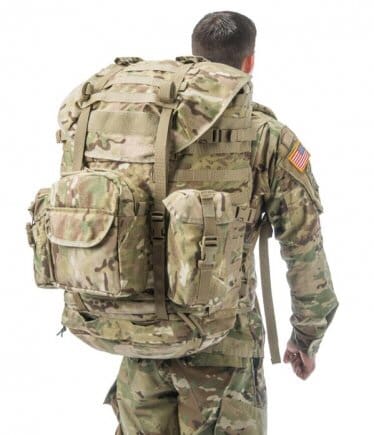
“One of the critical design issues is, you must distribute the weight onto the hips, the ideal load carrying surface on the body. The original ALICE pack only distributed the weight onto the shoulders and lower back — which was a real problem. Then we started talking about the science of load carriage. And that’s what MOLLE is all about. Getting the weight off the shoulders and onto the hips — a modular approach to the design of the rucksack.”
Members of the 82nd had even more specific requests. “One of the requirements that the 82nd had was that the harness that attaches the rucksack to the parachutist be sewn directly to the pack — because they didn’t want to lose any of the parts of it. This was the one requirement we didn’t agree with. We decided it would be better and more practical if the harness that supports the pack to the parachutists harness is removable but can be set up in a configuration that is seamless in how it attaches, and therefore, doesn’t require a long rigging process. Normally rigging a rucksack up to this type of harness can be a 5 min or longer process, depending on the Soldier. With this, it’s about a 1 min. process. But, it’s still completely removable when need be,” said Landry.
With a durable, yet light-weight frame, sewn-in pouches for organization of equipment, a pouch for airborne components (harness and lowering line), and MOLLE-webbing for attaching additional pouches, Landry believes the versatile MOLLE 4000 is both balanced and adaptable.
The MOLLE 4000 will begin fielding later this year. Around 6,000 packs are expected to be distributed to members of the 82nd Airborne Division. A large contingent of the conventional deployed force is also expected to receive a full-scale fielding of the rucksack in the near future.
By K. Houston Waters, US Army



